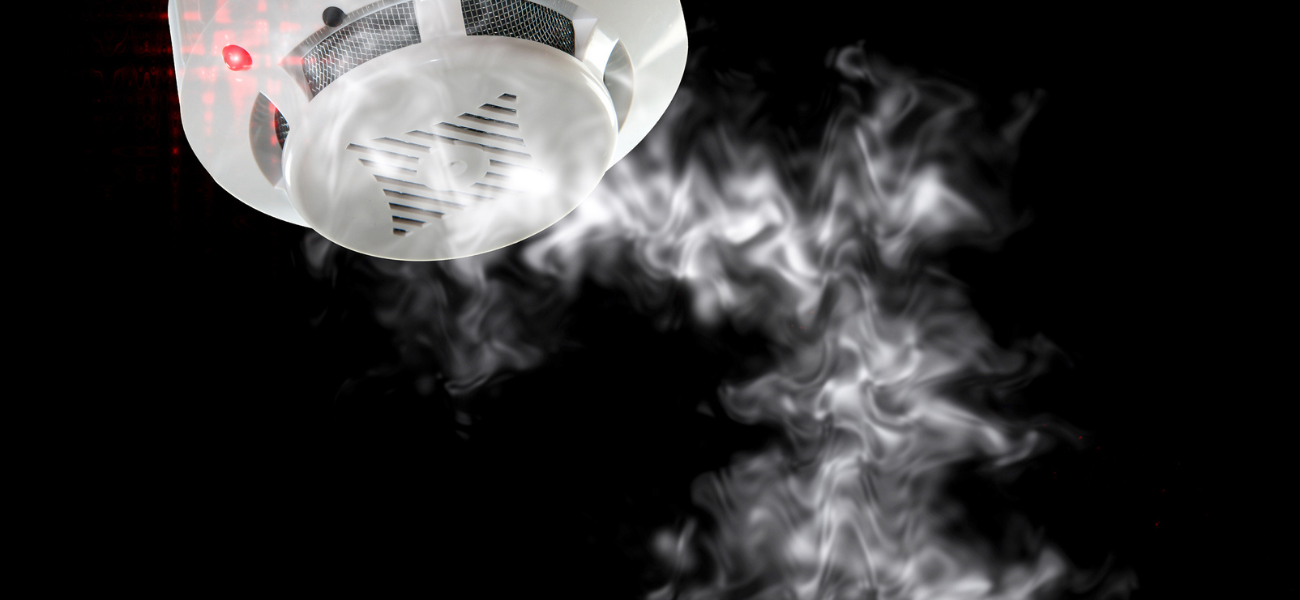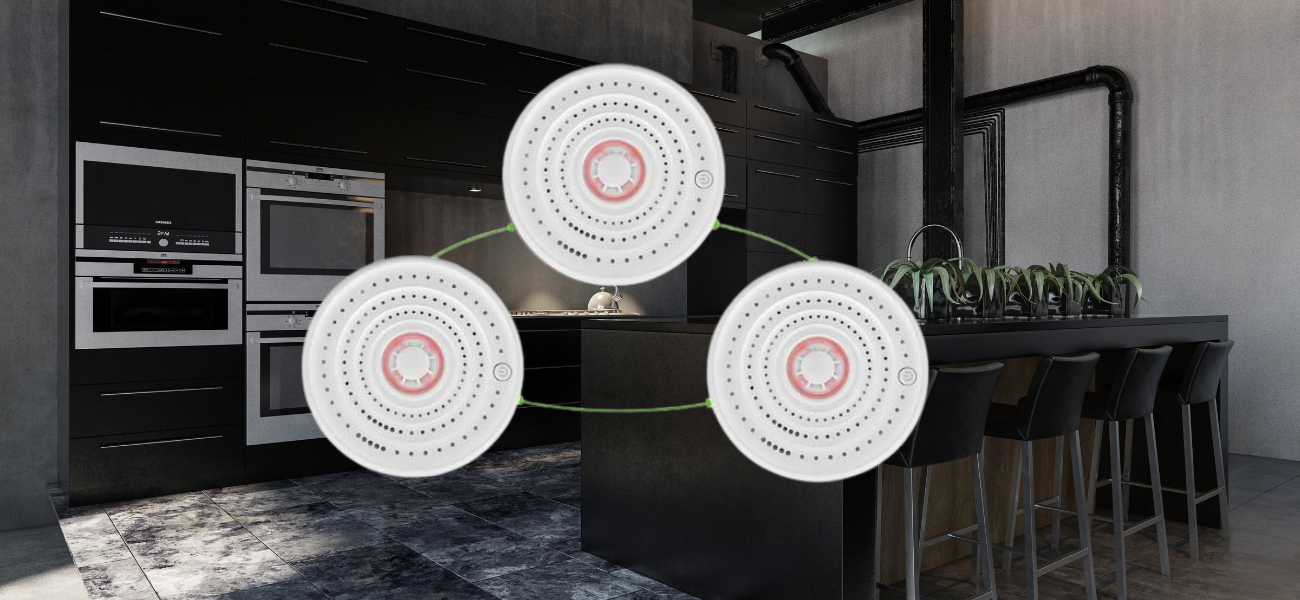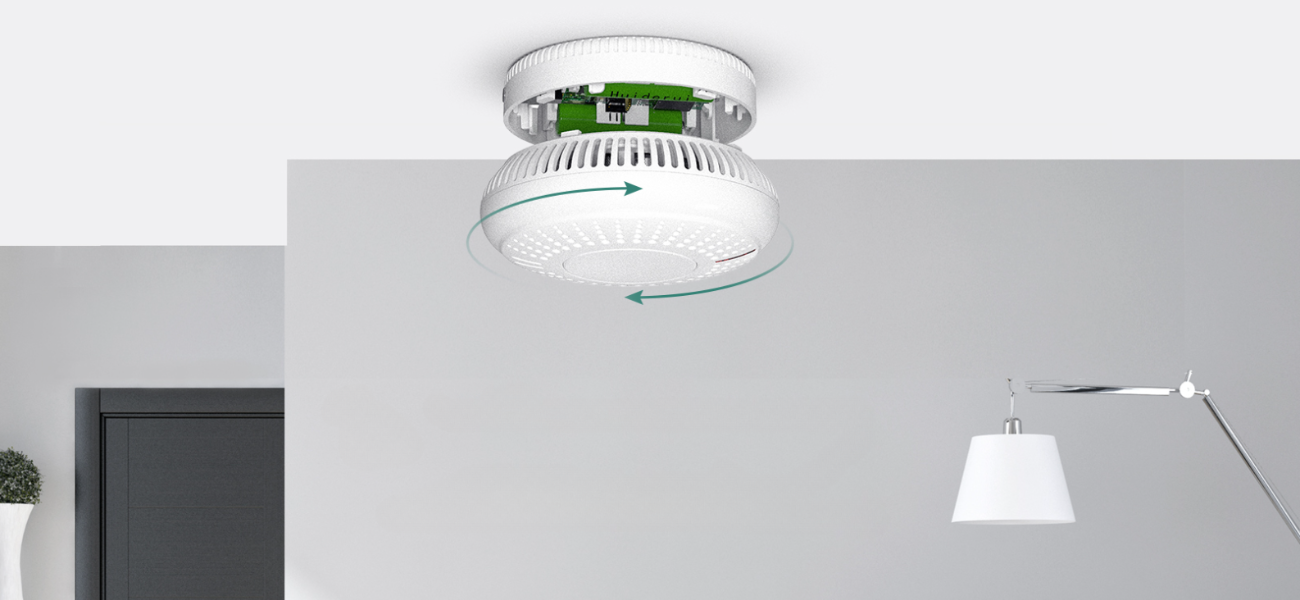What is an Optical Smoke Alarm
Optical smoke alarms are vital for home safety, using advanced light-sensing technology to detect fires early. This guide explores their workings, benefits, and proper use, helping you make informed decisions to protect your home and loved ones.
Key Takeaways:
- Optical alarms detect smouldering fires effectively
- They use light scattering principles for smoke detection
- Less prone to false alarms than ionization detectors
- Require regular testing and maintenance
- Legal requirements vary between Scotland and England
What is an optical smoke alarm and how does it work?
 Shop Alarms
Shop AlarmsAn optical smoke alarm is a fire safety device that uses a light-sensing mechanism to detect smoke particles. It contains an LED and a photoelectric sensor. When smoke enters the alarm's chamber, it scatters the LED's light beam, causing it to hit the sensor and trigger the alarm.

Understanding Optical Smoke Alarms
Optical smoke alarms rely on a sophisticated light-sensing mechanism to detect smoke particles. At the heart of these devices is a small chamber containing a light-emitting diode (LED) and a photoelectric sensor, typically positioned at a 90-degree angle to each other.
In normal conditions, the LED emits a beam of light that passes through the chamber without reaching the sensor. However, when smoke enters the chamber, it causes the light to scatter. Some of these scattered light particles then hit the photoelectric sensor, triggering the alarm.
The sensitivity of optical smoke alarms can be adjusted by changing the intensity of the LED or the sensitivity of the photoelectric sensor. Modern alarms often use pulsed LEDs to save power and reduce the chance of false alarms from ambient light.
Some advanced optical smoke alarms use dual-wavelength technology. These devices employ two LEDs emitting light at different wavelengths. By analysing the ratio of scattered light at these wavelengths, the alarm can distinguish between smoke particles and other airborne particles, further reducing false alarms.
History and Development of Optical Smoke Alarms
The concept of using light to detect smoke dates back to the 1940s, but it wasn't until the 1970s that optical smoke alarms became commercially viable for widespread use in homes and businesses.
- 1941: Swiss physicist Walter Jaeger accidentally discovered the principle while attempting to create a sensor for poison gas.
- 1960s: First battery-powered home smoke detector developed (ionization-type).
- 1972: First commercially available home optical smoke detector introduced.
- 1980s-1990s: Optical smoke alarms gain popularity due to lower false alarm rates.
- 2000s-Present: Integration of wireless technology and smart home features.
Recent developments include combination alarms using both optical and ionization technologies, and multi-criteria detectors that can distinguish between different types of fires and other phenomena that could cause false alarms.
How Do Optical Smoke Alarms Differ from Other Fire Alarms?
Optical smoke alarms are particularly effective at detecting slow, smouldering fires, which produce a lot of smoke. This contrasts with ionisation alarms, which are more responsive to fast-flaming fires with little smoke. Because of their sensitivity to visible smoke particles, optical alarms are less prone to false alarms from cooking fumes or steam, making them a suitable choice for installation near kitchens or bathrooms.
Benefits of Optical Smoke Alarms
- Enhanced Early Detection: Particularly effective at detecting smouldering fires before they escalate.
- Reduced False Alarms: Less likely to be triggered by non-fire-related smoke or steam.
- Versatility and Placement: Can be installed in a broader range of locations due to fewer false alarms.
Installation and Placement of Optical Smoke Alarms
Proper installation and placement are crucial for effectiveness. Optical smoke alarms should be mounted on the ceiling or high on walls, ensuring they are not obstructed by furniture or draperies.
Ideal Locations for Installation:
- Every level of your home, including the basement
- Inside each bedroom
- Hallways leading to sleeping areas
- Living rooms
- Near stairways
Avoid placing alarms too close to windows, doors, or air vents, where drafts could interfere with their operation.
Maintenance and Testing of Optical Smoke Alarms

Regular maintenance and testing are vital:
- Test alarms monthly by pressing the test button
- Vacuum the outside of the alarm every six months
- Replace batteries annually or when the low-battery signal chirps
Choosing the Right Optical Smoke Alarm
Consider the following factors:
- Interconnectivity: Alarms that can be linked for simultaneous alerting
- Smart Features: Wi-Fi connectivity for remote monitoring
- Longevity and Warranty: Long-life batteries or hardwired options
Legal Requirements and Standards for Smoke Alarms

Scotland (as of February 2022):
- Interlinked smoke and heat alarms required in all homes
- Carbon monoxide alarm required in rooms with fuel-burning appliances
England:
- At least one smoke alarm on every floor with a living room
- Interlinked and carbon monoxide alarms recommended but not compulsory
Final Thoughts
Optical smoke alarms are a critical component of any comprehensive fire safety strategy. While technology plays a vital role in fire safety, remember to develop and practice a well-thought-out evacuation plan. Combined with the vigilant use of optical smoke alarms, you can significantly increase the safety and preparedness of your environment.








